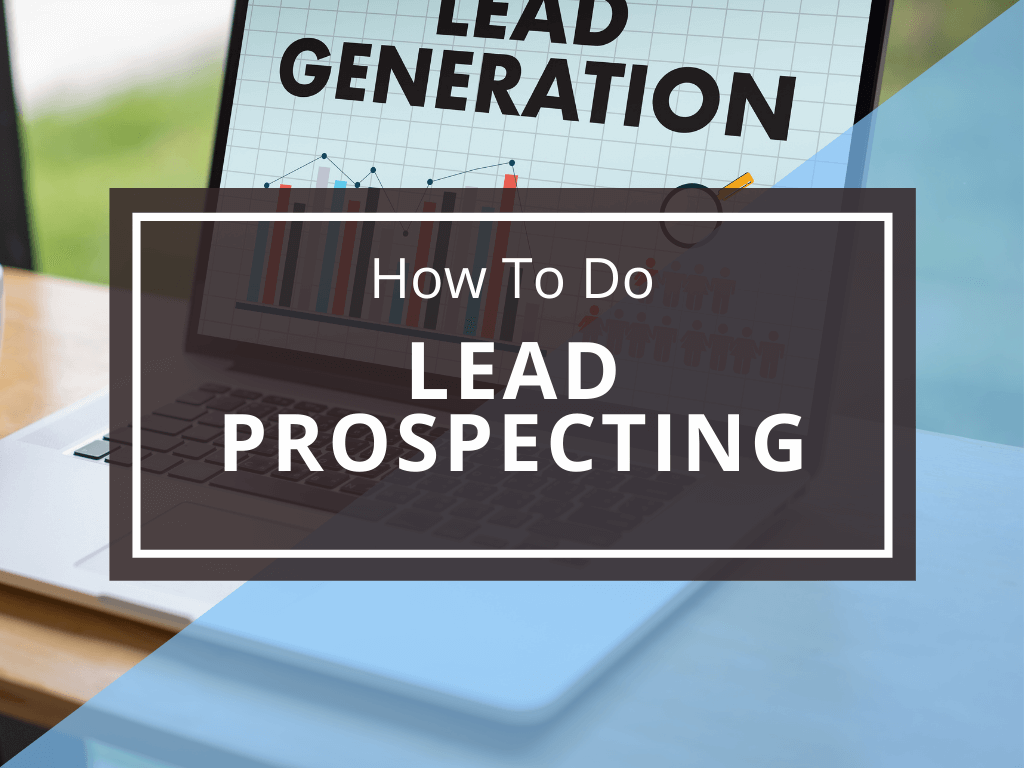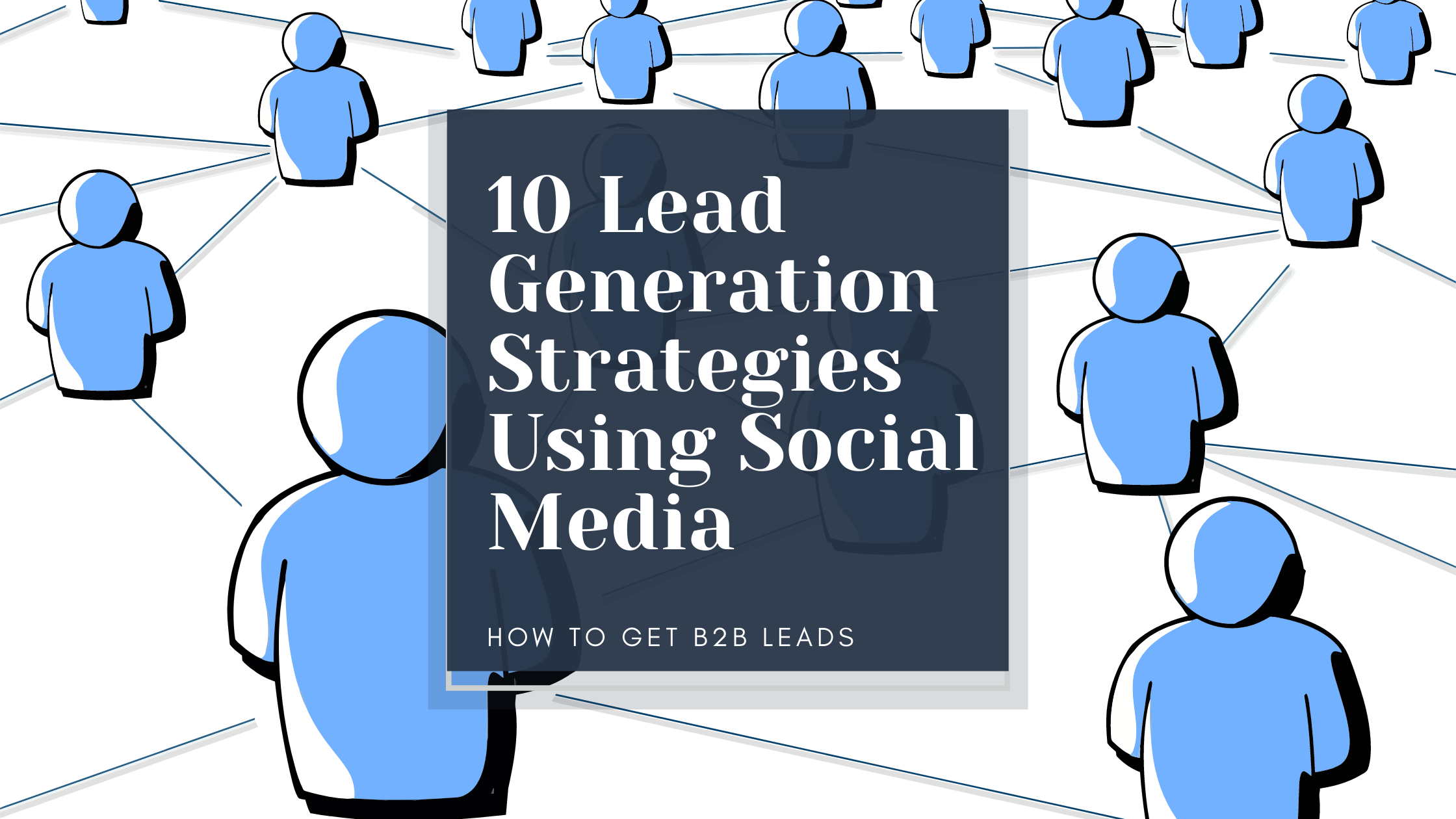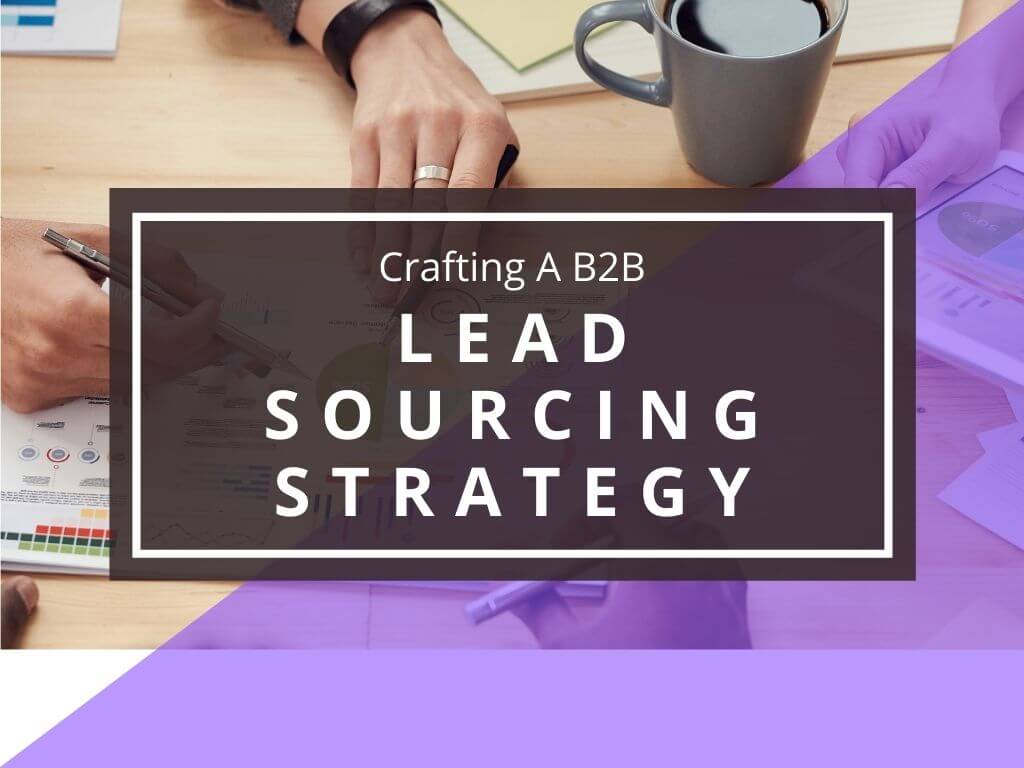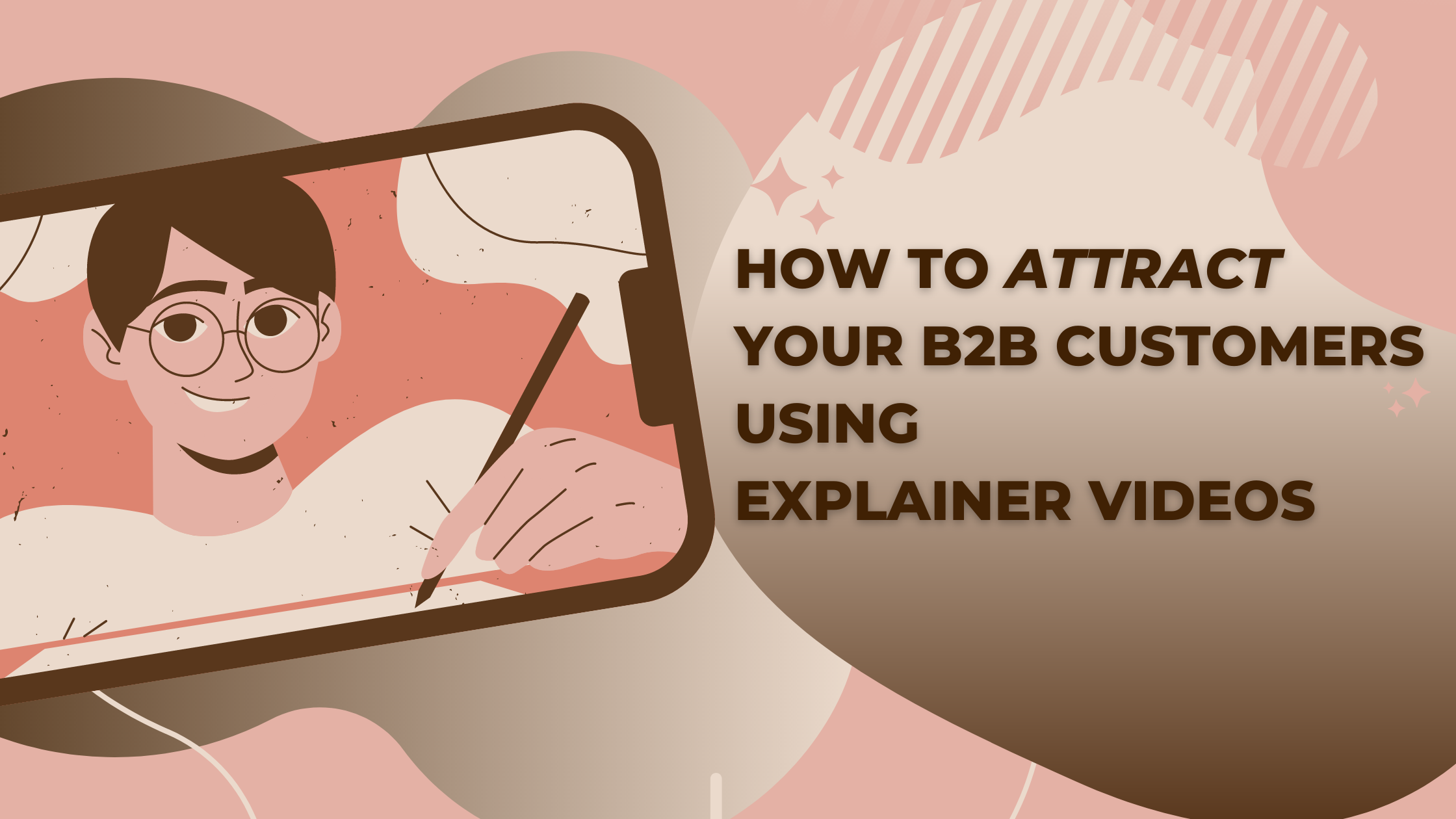The old saying goes “you can’t sell what you don’t have.” This is true, but it’s not the whole story.
You need to be generating leads before you can start selling – and lead generation means lead prospecting. Lead prospecting is about getting the information needed from prospective customers so that they will want to buy your product or service.
It’s a process of asking questions and gathering data about your prospects in order to determine their interests, needs, wants, and buying behaviors. Lead prospecting can take many different forms: cold-calling people who are actively looking for new services, attending trade shows or conferences where there are qualified prospects in attendance, responding to online ads for specific products or services that might meet your customers.
What is B2B prospecting?
B2B lead prospecting is about getting the information needed from a prospective customer so that they will want to buy your product or service. It’s a process of asking questions and gathering data about your prospects in order to determine their interests, needs, wants, and buying behaviors. Lead prospecting can take many different forms: cold-calling people who are actively looking for new services, attending trade shows or conferences where there are qualified prospects in attendance, responding to online ads for specific products or services that might meet your customers.
Leads come from four places:
- referrals (a personal connection),
- networking events (cold calling),
- direct mail campaigns (email marketing) and
- search engine optimization (SEO).
Lead prospecting vs lead generation
Lead prospecting differs from lead generation in that it seeks to identify and reach out to companies who may have potential interest in your product offering. Prospects are reached by phone, email, or even social media platforms such as LinkedIn where they are targeted based on their connection to specific industry keywords.
The difference between sales prospecting and lead generation is that lead generation is mainly focused on identifying potential leads who are actively looking for products or services. Sales prospecting seeks to reach out to companies with a product, service, or industry segment they may be interested in.
Lead prospecting is one of the most important aspects of a successful sales campaign. Sales prospecting is the process by which you leverage your networks, drive traffic to your website and generate leads for potential customers who are looking for products or services that match what you offer.
Depending on the type of company you work in and the product or service that you sell there might be other ways as well so make sure to evaluate where your target audience hangs out online before choosing one specific medium over another.
The following article will cover some basic tips about how you can use each platform effectively during Sales prospecting campaigns to generate leads for your sales pipeline.
How to do lead prospecting
You can do sales prospecting either through email or phone.
Email prospecting is easier because the prospective customer has already given their contact information to you, whereas with a phone call they have to take your time and be interested in what you’re selling.
Every lead should start by developing an understanding of who their prospects are – where do they work? What’s the level of experience (entry-level vs senior)? Where did they go for college? What does their company sell or manufacture?
You might want to use LinkedIn as a place to find current employees at those companies, but if not then a simple Google search will do just fine too.
Once you know that info about your potential customer then it’s important that when you reach out via email you craft a message that will resonate with your prospects.
You’ll need to write messages that entice your prospect and get them to want more information about what you do.
Sales prospecting is a numbers game.
Your target market is a big part of your lead prospecting game.
It’s easier to reach out and sell if you know the person on the other end is most likely going to be interested in what you have to offer them.
A simple Google search or LinkedIn will help show where they work, their previous jobs, schools attended, company size/name etc.
The better you understand your market the less of a numbers game it becomes.
It’s still a numbers game but now you’ve got an edge because you’re not targeting everyone, just the right people.
The more targeted your lead prospecting is, the better chance for success it has of reaching its end goal: closing deals!
Your target market should be one that coincides with what you are trying to sell and who would benefit from your offering in some way or another. Your customer base could include prospective clients within specific industries, geographic regions or companies; certain job titles; and/or particular demographics such as age group (e.g., children), gender (males vs females) etc. You need to know them before they can know about you!
Sales Prospecting is a numbers game
Sales Prospecting is a numbers game. It’s really a numbers game, and you have to be willing to do it if you want to succeed as an entrepreneur or sales professional.
Thou shalt not stop the process of lead generation once it has been started without good reason (e.g., when customers are banging down your door).
Salespeople don’t make money sitting on their hands – they need buyers! And prospects come from somewhere–you just can’t wait for them to walk into your office by themselves with no effort whatsoever on anyone’s part but theirs alone.
The more emails you send, the better chance that someone will open your message and engage with what you have to offer.
Some people think prospecting is just cold-calling or emailing random prospects, but it’s about understanding who those potential customers are so that when you do reach out via email (or phone) they’re able to relate more easily because of how close their information aligns with yours.
Prospecting also requires creativity; in this day and age where everyone has something going on it’s not enough anymore for businesses to simply be another face trying to sell them something.
You need to understand both sides – why would your customer want to work with you? What does your company have that appeals specifically solves their problem.
What comes first, prospect or lead?
Prospects come first. Lead prospecting is the process of researching and identifying prospective customers, or leads, for a product or service and converting them to prospects by engaging with them through marketing activities such as email campaigns, telemarketing calls, social media postings, etc.
The goal of lead generation is to identify potential buyers who have not yet decided what type of products they want to purchase (the “top of the funnel”) and turn these people into leads that will then be qualified into one or more categories:
Inbound Leads – They find us on their own after we’ve published content;
Event Marketing Leads – These are generated from attendance at an event where your brand/products were presented. This is one of the most effective lead generation activities;
Phone Leads – Lead prospecting by calling potential clients and converting them into leads for our business.
Outbound Leads – These are generated from emails, social media posts, or website visitors who have expressed interest in a product/service but do not want to be contacted (pre-qualified) unless there is something specific they need based on their comments.
The goal of Lead prospecting is to identify new prospects that will turn into qualified new prospects through marketing efforts such as email campaigns, telemarketing calls, etc. The ultimate goal of these tactics would be turning these people into buyers.
Some organizations don’t know where to start with lead prospecting because it can seem difficult at first glance.
If you don’t have a large sales team yet, or you have one but want them to focus 100% on closing rather than gathering prospect list and verifying them you’ll want to outsource your lead prospecting to a company capable of generating qualified leads for your sales team.
Brightest minds has the expertise, tools, and experience to craft a lead generation strategy that will help you grow your business.
We’ll work with you to identify and prioritize the right audience, craft a compelling offer for them, collect their contact information our database so when sales team is ready they don’t have to waste time on prospecting calls or emails.
Targeting the right prospects
Knowing your customer is key to generating leads because when you understand your marketing persona you’ll know who to target.
Brightest Minds specializes in helping you define and create a buyer persona that allows you to speak more powerfully to their needs.
Here are some questions to consider:
– What is the job title of your ideal customer?
– What problems does this person want to be solved?
– Where do they spend their time online and offline, what publications or social media platforms do they use most often?
– How much money can one individual purchase in a year (budget)?
In other words, what sets you apart will help define who’s your buyer persona. Once you know that it becomes easier for lead prospecting. Brightest Minds has created an interactive tool called Lead Prospector so you can better identify prospects by company name, industry sector or location.
The 9 Step Selling Process
Let’s first get a clear understanding of the sales process.
The sales process is not simple and can be daunting for new salespeople, but it doesn’t have to feel that way.
Breaking down every step of the process into logical levels will help you see how there are just a few steps at which most prospective buyers stop their journey with your company because they don’t think what you offer fits exactly what they need or want.
You’ll realize that if you get them through one of these stages then by definition they’re likely good enough so far on the buying ladder for someone else downstream in this cycle to close.
Steps in the Selling Process:
- Prospecting
- Pre-Approach
- Presentation
- Trial close
- Determine objections
- Meet objections
- Trial close
- Close
- Follow-up
Referral system for generating sales leads
People make referrals because as a form of survival, they want to make sure that their friends and family have access to the same quality of life as them. It’s a form of altruism, but it also benefits them in some way.
The referral system is an excellent method for generating sales leads because people are more likely to buy something from someone they know or are related to than from a stranger. Use this powerful motivation by implementing a referral program with your company today!
Steps:
- Market-wide advertisement (Facebook ads, youtube video)
- Create an incentive for customers (give away free products if one sells another product)
- Offer gift cards on referrals
Your Sales Team and Sales Process
Is your sales team ready? A successful sales process is one that requires both A) Lead prospecting and B) closing sales. It is important that the customer and your team understand each other’s expectations.
Typically, prospects are going to come through either email or phone (sometimes even social media) at this point in time so it’s important for them to know exactly where they stand with you – their lead contact.
This means that when there’s an opportunity for follow-up before any other company reaches out then you’ll be able to take advantage of it! The prospect will feel like they’re special because only YOU care about them which makes the entire experience much more personal and impactful.
It also allows customers who may not be ready yet but could use some guidance on how best to move forward.
Be sure your sales team is ready to handle an influx of new leads by creating a lead nurturing program that allows for quick follow-up and is tailored to the needs of your company.
A good lead nurturing program will help your team handle any influx of new customers while avoiding wasting valuable resources from potential future customers.
Sales teams should reach out with your pitch in an effort to make that person interested in purchasing from your company.
A good lead nurturing program will help your team handle any influx of new customers while avoiding wasting valuable resources from potential future customers.
Lead Generation Process – The Role of Sales Teams
Sales teams need to be focusing on closing sales not necessarily identify customers.
The idea is that once somebody has shown interest in your product, it’s time to shift gears and close the sale. Lead nurturing programs are designed for this specific purpose: making sure leads become clients without wasting resources by saying “no thank you” too many times or when they don’t seem interested at first glance.
We know what we do best and can help provide a lead nurture program tailored specifically for your company’s needs so that you get the most out of every prospecting dollar invested into advertising campaigns!
A good lead nurturing program will help your team handle any influx of new customers while avoiding wasting valuable resources.
The key takeaway? Focus on contacting those prospects quickly to convert into loyal clients.
Lead Generation Strategies:
One common strategy to attract customers is by offering discounts. But these days, there are plenty of websites that offer the same thing. You could take a second look at your prospects and see if they might be interested in any nationally advertised deals instead.
Discounts can be one of the most effective ways to attract prospects because everybody wants a deal.
One way to do this is by taking a look at your prospective customer’s connections and seeing which ones might be interested in nationally advertised deals instead of the discount that you offer.
How does a lead qualify as a prospect?
Lead qualification is an important part of lead prospecting.
Leads are qualified when they meet your criteria for investing in them. This boils down to:
– Is the person or company a good fit? Will this be someone I could work with and would want to sell my product too? If you’re not sure, then don’t waste their time by giving them false hope; but if you think it’s likely that they will buy from you, go ahead and build rapport first! You can always turn off the relationship later on if it doesn’t pan out.
– Does this lead have money (not just credit card debt)? Lead quality includes both buying power and access to cash flow which makes people more attractive prospects because there’s sales potential there.
– What is the lead’s industry?
– Does this Lead have a budget for your product or service?
– Is their company size too small to be worth it, are they not in need of what you offer, will they buy from you on an ongoing basis (continuity)?
– How much time and energy do I want to invest in this lead? – If someone has money but no access then that person may become frustrated with lack of progress and leave. So don’t waste your prospect’s time if there isn’t any sales potential.
Again, turn off the relationship if they’re uninterested! It all boils down to how many leads are qualified prospects as opposed to just people who can afford your offer.
How to write emails that get your potential customers interested
Writing the perfect email outreach message sounds more daunting than it really is.
It’s all about being personable and polite, but also keeping the simple facts in mind so that you can send a message to your potential customer that they’ll want more info on what you do when it arrives.
Here are four things to consider when writing email outreach messages:
– Start with “Hi” or “Hello,” then introduce yourself briefly (e.g., “I am an entrepreneur who started my own marketing company”)
– Customize your email by saying something like ‘thanks for taking time out of your busy day if you know this is their first week back from vacation; ‘good morning!’ if it’s early enough in the day; etc.
– Include specific details such as why you think they might be the perfect fit for your services or how your product was specifically designed for them.
– Offer them a call or email to follow up. (If they don’t respond, you can also offer an alternative time for them.)
Email prospecting mistakes:
A common mistake people make is to drone on and on about irrelevant things prospects don’t care about. Instead:
- Ask them questions to find out how they’re currently dealing with their problem
- Ask them questions to find out what their needs are.
- Find out if they’re looking for a specific solution or just something that might help temporarily.
- Discover the most important thing they want from your services and offer it up in your first reply email to them.”
- “Don’t tell me about yourself”. They don’t really care about you and your business, they just want to know that you understand THEM and what they’re looking to accomplish.
- Invite them into your sales funnel or offer a free trial of whatever you’re selling.
The most common email outreach mistakes:
There are many ways to mess up a cold email prospecting campaign.
It’s even possible to mess up an email prospecting session that starts off on the right foot with a good script and strong opening statement if you’re not careful about how you follow it up!
Some common mistakes include:
Attempting to use too many words in your subject line or body will make it appear that you’re spamming your email contacts.
Asked for a response too soon – right away is better than the morning after, but there’s no reason to come back and ask them again in two days or less.
Sending out generic emails instead of personalized messages is the number one mistake people make, but fortunately, its also easy to avoid given that ll you have to do is personalize your emails to make them stand out.
This is a good example of what not to do:
Subject Line: “Hi there!”
Body Content:
Hey, can you help me out?
I’m looking for some info. It has to do with that thing we talked about earlier this week.
Let’s chat!
Thanks in advance.”
This email comes off as very impersonal and insincere because the sender does not know who he is writing to at all (I’ll assume a name). Asking for information without providing any context or setting an agenda means that they have no idea what will be relevant to their readership.
Be sure to get right to the point of showing that you understand their problem and show them what you have to offer and how it’s the fastest/easiest/most cost-effective solution.
This email should be rewritten:
“Hi! I noticed you were looking for some help with your project last week – could we talk about it now?”
Asking questions shows interest without coming across cocky or overconfident since there are assumptions built into the question itself based on what information was provided earlier.
Add humor to your emails
Add some light humor to increase lead conversion rates.
You’ve seen the headlines, so you know that one of the best ways to get noticed is by using humor in your email subject lines and content. Studies show that sending a funny email increases open rates by 20%.
Here are some good examples of funny email subject lines:
- Hey, it’s me!
- Crazy busy right now. Do you have some time to talk?
- I was thinking about how we were going to get this done and here is the plan.
Humorous subject lines can be seen as a humanizing touch and can inspire trust.
Here are some good ways to use humor in your email content:
- You’ve got too many meetings today, I am going to go crazy!
- Do you want me to do anything for you before I leave?
- I need a vacation after this project is done.
Lead prospecting software and sales prospecting tools
If you’re more into doing your own in-house prospecting you may want to leverage the power of software to generate leads for your sales team to close.
Lead prospecting software allows you to manage your leads and email them with personalized follow-up messages. It also takes out the guesswork on what content is needed for each lead stage of their buyer’s journey, so that you can be more efficient when it comes to lead nurturing.
Lead Generation Tool: Lead Forensics
This tool will allow marketers to research prospects based on industry or company size. You are able to find the current number of employees, revenue generated in 2016, as well as other information about a specific business using this website. This helps marketers get an idea if they want to move forward with crafting a cold outreach campaign specifically tailored towards companies like these.
Sales Software & Tools: HubSpot Sales also provides an in-depth way to sell and prospect. HubSpot Sales integrates with CRM software, email marketing tools like MailChimp or ActiveCampaign, tracking apps for implementation data (like the Lead Forensics tool mentioned above), as well as other sales management necessities such as time tracking.
Sales prospecting could take ages if you try to do it manually. Instead, we recommend using software to help you prospect. Here are some of the top lead management tools:
– LeadFlex
– Eloqua
– Marketo
– Oracle Marketing Cloud
If you’d like to do lead generation yourself you’ll want to spend time and resources learning how to use different lead generation software to find the right one for you.
This will help cut down on lead times, sales cycles, and a number of mistakes made in those processes. You’ll also get access to reporting tools that give insights into how well you’re doing with lead management so that you know when it’s time to adjust or tweak your strategy if necessary.
If this sounds like too much work and investment you can hire a team of lead generation experts at a fraction of the cost of an in-house lead generation team. Brightest Minds has the tools, experts, and industry experience to get you appointments with verified leads who are looking for a solution right now.
This will help cut down on lead generation efforts, sales cycles, and a number of mistakes made in those processes. You’ll also get access to reporting tools that give insights into how well you’re doing with lead management so that you know when it’s time to adjust or tweak your strategy if necessary.
For more information about Lead Generation Services from Brightest Minds follow here ? https://brightestminds.online/demo
Brightest Minds are a team of experts in lead development strategy.
Learn how we can help you get more leads at a fraction of the cost.
Continue Reading >
How Brightest Minds Can Help: Sales Prospecting is one of our many services offered under marketing and sales consulting for businesses looking to grow their lead generation capacity without breaking the bank.
Brightest Minds has a team of experts for Lead Services that help businesses find potential customers. Our team has the knowledge and experience to provide you with all of your lead generation needs including:
– Prospecting – Generating Leads – Lead Screening & Evaluation
Learn more about Lead Generation Services from Brightest Minds! > Get in touch today for a consultation to see what we can do for you or visit our website at www.BrightestMinds.io
You’ll also get access to reporting that gives insights into how well you’re doing with lead management so that you know when it’s time to adjust or tweak your strategy if necessary. For more information about Lead Services from Brightest Minds follow here ? https://brightestminds.online/demo














